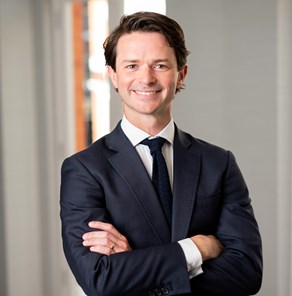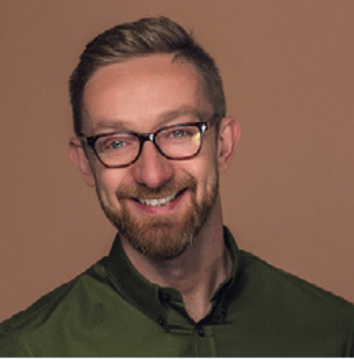Medtech: Life saver and money maker
Medica Group Chairman Roy Davis speaks to Inflexion about medtech’s value-add to healthcare.
The UK has a good track record of creating start-ups and spin-outs from universities that have strong medical and technology bases and are looking to commercialise, however there are far fewer that go on to become mid-sized medtech companies compared to the US and Europe.
There are multiple reasons why this is the case. UK companies may be more open to being acquired earlier in their life cycle, viewing acquisition as a successful outcome rather than having the patience required to build a major global business.
The UK market also tends to be driven by the NHS, and this can present some challenges. For example, if a company can get its product or service adopted by the NHS it has access to a potentially large opportunity, however it has historically been a slow adopter of new medtech. Additionally, it doesn’t always behave as ‘one client’ since it is made up of different trusts with differing purchasing behaviours and priorities. Investors also worry about the NHS as a customer because there is a sense that it will always be under cost pressure, which can squeeze suppliers.
Companies tend to look overseas for larger or faster-growing market opportunities since our home market doesn’t always encourage adoption of key medtech technologies.
This nature and size of the UK market can be a deterrent to businesses seeking to drive scale. Often in the UK, businesses get to a certain size and then tend to get acquired, frequently by US or Asian companies looking for unique technologies that they can leverage through their established channels. For example, Gyrus was number one or two in its key markets of gynaecology, urology and ENT in the US (with 75% of its revenue generated there and limited sales in the UK) and ultimately it was acquired by Olympus as it sought market leadership in these markets in the US.
Companies considering whether to be public or private need to understand the benefits and risks clearly.
In my opinion being public only makes sense if you are going to use the publicly available funds to support M&A or investment decisions. Public markets can be more unforgiving if you fail to deliver on your numbers, whereas the right private backer may be more patient
and thus arguably a better fit. This is because the former means you have multiple and diverse backers so need to spend more time explaining your vision, versus private equity where if you are aligned you can focus on growing the business and thus scale faster.
I have had positive experiences of both the public market and private equity ownership so both can work, but choosing the right one for your situation can speed up delivery of the vision.
Artificial intelligence (AI) is about improving productivity and efficiency – helping clinicians be more efficient, not replacing them.
In data-rich environments such as radiology, I believe AI can help us improve efficiency as it helps clinicians focus on the clinically urgent cases. This in turn reduces capacity constraints and ultimately delivers improved patient care.
One challenge is how to pay for AI. For example, in the US the reimbursement for an imaging procedure has two elements to it – a technical part for capturing the image (usually small) and secondly the interpretation part (usually the larger) for analysis, which requires time and clinician skills. If you replace the interpretation part with AI software it erodes the value of this, making the business model – and thus adoption – more challenging. It then becomes about health economics and proving that using an AI product across a certain number of people will ultimately save the system money and so derive the value that way.
In a world where clinician capacity is constrained given ever-increasing demand, new technologies such as AI are both required and inevitable.
Technology is helping clinicians to be more effective and this will ultimately deliver better patient outcomes.
It is part of healthcare evolution, with medtech helping doctors and clinicians to focus on what is important.
One of the challenges is convincing customers that it’s worth the initial expenditure today because it will be paid back many times tomorrow as it saves money through efficiency improvements.
Beyond the money, it can also improve patient outcomes. For example, some technologies can help diagnose diabetes earlier, which can help that patient to make lifestyle changes to improve their quality of life, and also save money as it is prevented from developing into something costlier down the line – whether for the NHS or an insurer.
New technologies can offer new solutions to the medical challenges the world faces, which can improve patient outcomes whilst offering investors attractive returns. Getting out of bed everyday knowing that what you do helps improve people’s lives and benefits society as a whole feels pretty good!
Public markets can be more unforgiving if you fail to deliver on your numbers, whereas the right private backer may be more patient and thus arguably a better fit.
Roy Davis, Chairman, Medica Group
Roy is Chairman of UK teleradiology company Medica Group plc, Chairman of Edinburgh Molecular Imaging Ltd and a medical advisor to Nikon Healthcare.
He was formerly CEO of Optos Plc, a retinal imaging manufacturer from 2008 to 2015 until its sale to Nikon for $400m in 2014. Prior to that Roy was CEO of medical device company Gyrus Group plc until it was acquired by Olympus for $2bn in 2008. He also spent almost 10 years with management consultancy Arthur D. Little.
Roy has Non-Executive Director experience in both public and private equity-backed companies including Gyrus plc, Osmetech plc, NTERA Ltd and AuraLight Sweden.
Contact



